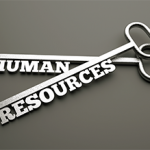
It is too often the case that an employment-related dispute could have been avoided if the parties had just put the agreed terms in writing. An ounce of prevention is worth a pound of cure.
The basic details of every employment relationship should be put in writing. Relying on what the employee and employer “knew” to be true after the fact can oftentimes be an exercise in “he said, she said,” with each party recalling very different versions of what was promised, what was said, and what was done. Timely and well-considered documentation of the employment relationship at all stages is essential to effectively manage personnel and protect your practice in the event of a legal claim.
Below is a checklist of the key documentation that you should have in place for each of your employees.
Employment Application
Relying purely upon a resume to learn about an applicant may leave some important questions unanswered. While an employment application will not ensure that you have perfect information (there are legal limits on what you can ask, and applicants tend to embellish their credentials), a well-designed form is a useful tool to ensure a standard baseline of information from each candidate. The basics include educational background, work experience, compensation history, the employee’s availability in terms of work hours, and the employee’s compensation expectations. Questions with regard to criminal history and physical capabilities are a bit trickier, and a legal counsel should vet any application questions concerning these issues.
Post-Offer/Pre-Hire Documents
If you require a background check and drug testing as conditions of hire, appropriate waivers for such requirements need to be secured after you select the candidate, but before you formally hire him or her. In the event the background check or drug test reveals information that precludes employment, paperwork documenting that this information is accurate is required. It’s a good idea to confer with legal counsel to ensure these forms comply with applicable federal and state requirements.
New Hire Documents
Once an employee has been hired, the employee’s contact information, tax information, employment eligibility verification (i.e., the I-9 form), and benefits elections need to be gathered. These documents are the beginning of the personnel file. An indication as to the starting wage should also be included. Many employers choose to document the initial terms and conditions of employment in an offer letter. Good offer letters make clear the baseline initial terms of hire while making clear that these terms can change at the discretion of the employer. Many offer letters include no such reservation of rights as to changing terms and conditions of employment and give fodder to claims that the employee has a contract with set terms.
Employee Handbook
An employee handbook is not a contract. In fact, your employee handbook should make clear in conspicuous terms that it is not a promise of employment for any set duration and that it is subject to amendment at any time, with or without notice. Rather, an employee handbook is an important tool in establishing the terms and conditions of employment, which you can amend from time to time.


